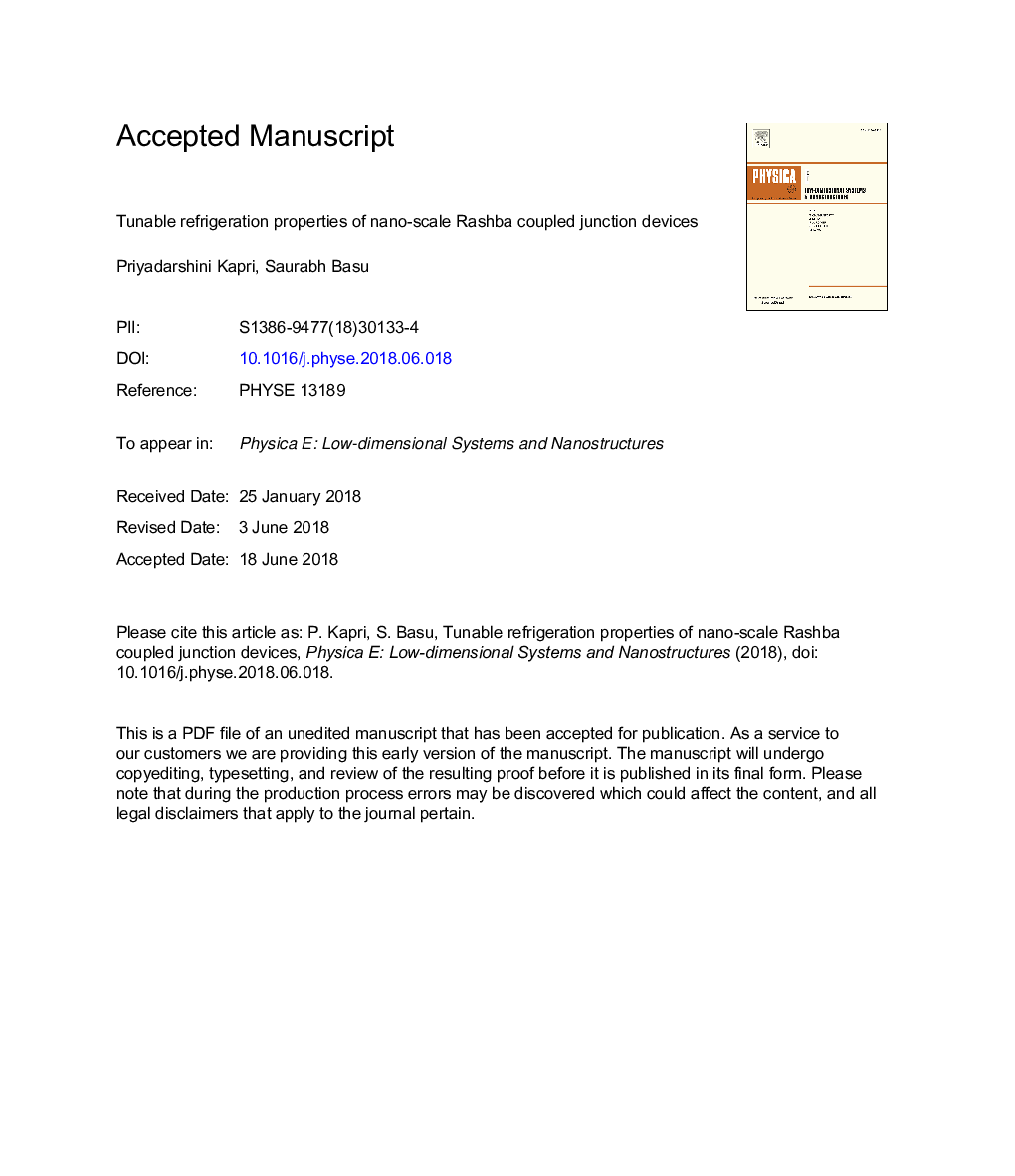| Article ID | Journal | Published Year | Pages | File Type |
|---|---|---|---|---|
| 7933236 | Physica E: Low-dimensional Systems and Nanostructures | 2018 | 27 Pages |
Abstract
We propose a tunable nano-scale thermoelectric cooling device based on a metal - insulator - superconductor (MIS) junction at ultra-low temperatures with Rashba spin orbit coupling (RSOC) being present at the interfaces of the junctions. The operational range of temperature of this junction device is set by the transition temperature (Tc) of the superconducting lead. We have investigated the working principles and performance of this nano-scale junction as a cooling device using a modified version of well-known Blonder-Tinkham-Klapwijk (BTK) theory. It is observed that the refrigeration property of this device is restricted to a very narrow range of driving voltage that biases the junction and the value of which lies in the vicinity of the superconducting order parameter. So a careful choice of the superconducting lead may provide a possibility of controlling the operating bias voltage. Since the electronic charge current and also the thermal current being strongly sensitive to the strength of RSOC, a further tunability of this junction device with regard to its thermoelectric cooling properties can be achieved by experimentally achievable techniques that can manipulate the value of the Rashba coupling strength. We have numerically computed the thermal current and coefficient of performance through this junction and investigated the role of the RSOC parameter and the effective barrier potential pertaining to the insulating regime, where we have obtained a very interesting interplay between the effective barrier potential and the strength of the RSOC on the behaviour of the thermoelectric cooling and the performance coefficient of the junction. Thus this device may be suitable for tunable nano-refrigeration properties, where the thermoelectric cooling and the coefficient of performance can be manipulated by tuning the RSOC parameter and the effective barrier potential of the insulating region. Our results indicate the practical usefulness of tunability of RSOC and effective barrier potential for efficiently cooling detectors, sensors, and quantum devices and this could be crucial to experimental success of the refrigeration applications of such junction devices.
Keywords
Related Topics
Physical Sciences and Engineering
Materials Science
Electronic, Optical and Magnetic Materials
Authors
Priyadarshini Kapri, Saurabh Basu,
